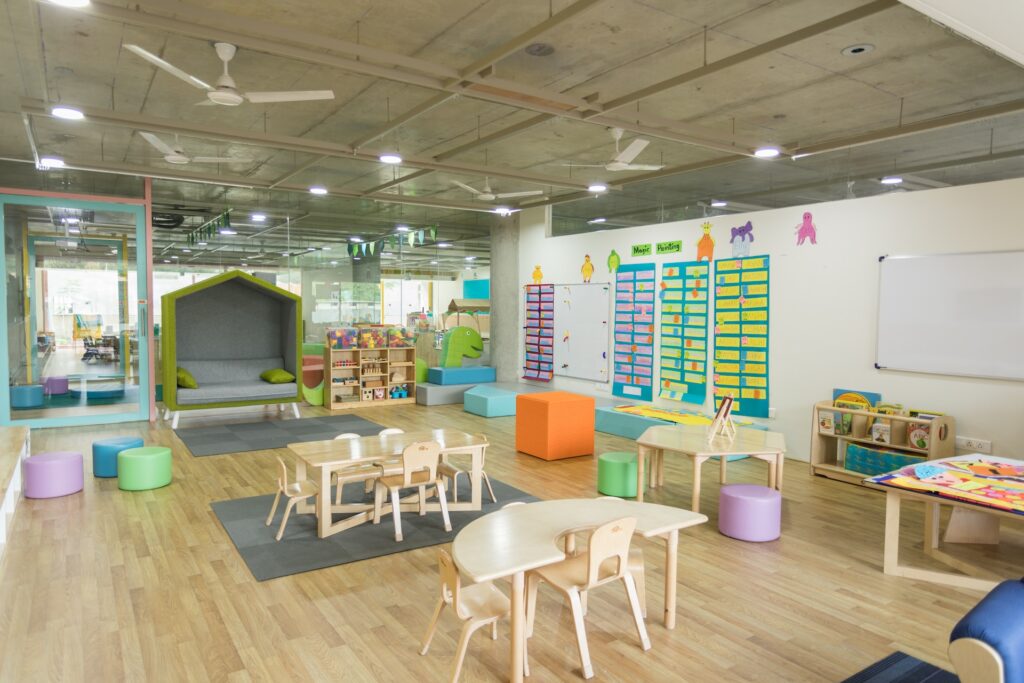Crafting an Effective Preschool Curriculum: A Roadmap for Early Childhood Education

Preschool education is a critical stepping stone in a child’s developmental journey. It lays the foundation for lifelong learning and is a time when young minds are most receptive to new ideas and experiences. A well-designed preschool curriculum not only fosters cognitive development but also nurtures social, emotional, and physical growth. In this article, we will explore the key components of a successful preschool curriculum, emphasizing its importance and the considerations that go into crafting an effective program.
The Significance of Preschool Education
Preschool education is often the first formal educational experience for children. It serves as a bridge between the nurturing environment of the home and the structured learning of primary school. The importance of preschool education can be summarized in several key points:
- Cognitive Development: Preschool introduces children to basic concepts, such as numbers, letters, shapes, and colors, preparing them for more advanced learning in the future.
- Socialization: It provides a safe and supervised environment where children can interact with peers, helping them develop crucial social skills like sharing, cooperation, and conflict resolution.
- Emotional Development: Preschool helps children understand and manage their emotions, fostering self-confidence and resilience.
- Physical Development: Through structured activities, preschool promotes fine and gross motor skills, which are vital for a child’s overall growth.
- Language Skills: Exposure to language-rich environments in preschool supports language development, aiding in effective communication and literacy skills.
Key Components of an Effective Preschool Curriculum
A successful preschool curriculum comprises a blend of structured learning and play-based activities, focusing on holistic development. Here are the key components that should be integrated into a preschool curriculum:
- Play-Based Learning: Play is the primary mode of learning for preschoolers. It allows children to explore, experiment, and make sense of the world around them. A well-balanced curriculum should include ample time for free play, as well as guided play activities that promote learning through exploration.
- Literacy and Language Development: Early exposure to books, storytelling, and vocabulary-building activities are crucial for language development. Storytelling, reading, and discussion sessions should be integral to the curriculum.
- Mathematics: Introducing basic math concepts through games, puzzles, and hands-on activities can help children develop a foundation for mathematical thinking.
- Science and Exploration: Encourage curiosity and critical thinking through science-based activities. Preschoolers can explore simple experiments and observe natural phenomena to spark their scientific curiosity.
- Arts and Creativity: Arts and crafts activities foster creativity and self-expression. Painting, drawing, sculpting, and other artistic endeavors are essential for fine motor skill development.
- Physical Education: Active play and physical activities are integral to a preschool curriculum. These activities develop motor skills and promote a healthy lifestyle.
- Social and Emotional Development: Preschool should provide a supportive environment where children can build friendships and develop emotional intelligence. Conflict resolution and empathy-building activities can be integrated to teach important social skills.
- Cultural and Social Awareness: Introducing children to diversity and different cultures helps them develop an inclusive worldview. Celebrating cultural events and exploring the wider world can be part of the curriculum.
- Music and Movement: Music and dance activities enhance coordination and rhythm, as well as stimulate creativity. These activities can also be used to teach basic math and language concepts.
- Outdoor Activities: Outdoor play, nature exploration, and field trips offer opportunities for children to connect with the natural world and learn through real-life experiences.
Customizing the Curriculum
While the components mentioned above are fundamental to a preschool curriculum, it is essential to tailor the program to the specific needs and characteristics of the children in your care. Each child is unique, and their development varies. Here are some considerations when customizing a curriculum:
- Developmental Stages: Different age groups may have distinct developmental needs. Adapt your curriculum to align with the developmental milestones of the children you are teaching.
- Inclusive Learning: Consider any special needs or accommodations that children might require. Inclusivity is a core principle of early childhood education.
- Cultural Sensitivity: Ensure that the curriculum is respectful of the cultural backgrounds and beliefs of the children and their families.
- Learning Styles: Children have diverse learning styles. Some may be visual learners, while others are kinesthetic or auditory learners. Incorporate a variety of teaching methods to cater to these differences.
- Assessment and Progress Monitoring: Regular assessment of each child’s progress is crucial. This helps identify areas where children may need extra support or advanced challenges.
Parental Involvement
Preschool education is most effective when it involves parents in the learning process. Regular communication between educators and parents is essential for a child’s overall development. This partnership can be cultivated through:
- Parent-Teacher Conferences: Regular meetings between parents and educators can provide insights into a child’s progress and areas of improvement.
- Home-Based Activities: Suggesting activities or resources for parents to engage in learning at home can reinforce what children are learning in school.
- Open Houses and Workshops: Hosting open houses, workshops, and informative sessions can help parents understand the curriculum and its goals.
- Feedback Loop: Encourage parents to provide feedback on the curriculum and their child’s experiences, fostering continuous improvement.
Conclusion
An effective preschool curriculum is the cornerstone of early childhood education. It should provide a nurturing, stimulating, and inclusive environment where young minds can thrive. Customizing the curriculum to meet the unique needs of each child and involving parents in the learning process are vital aspects of a successful preschool program. By focusing on holistic development, a well-crafted preschool curriculum sets the stage for a lifetime of learning and growth.

